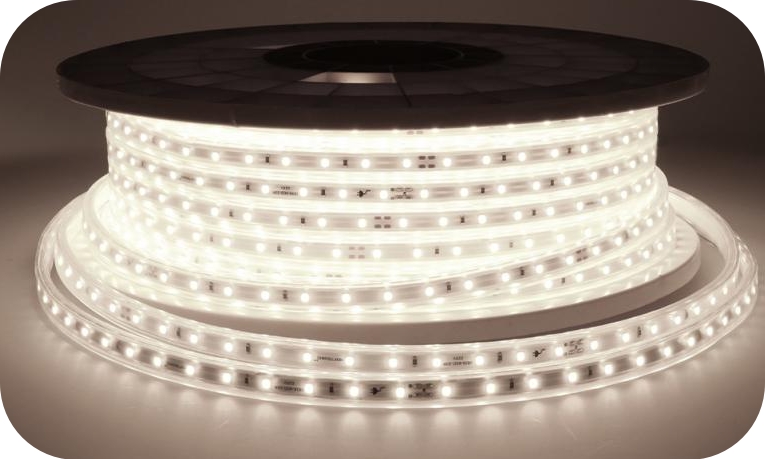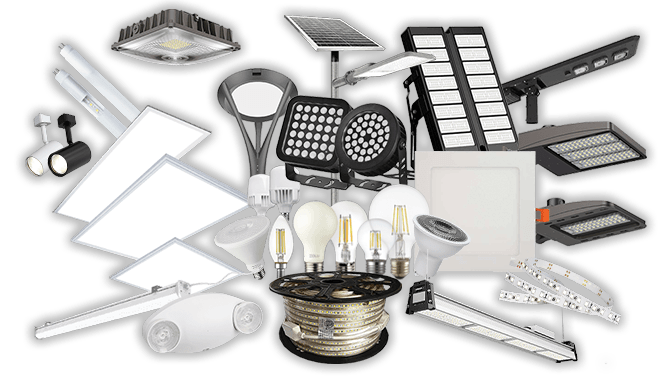Do you know what is the yellow line in LED light?
By hqt

We are aware that you are looking for the correct response to the question, “What is the Yellow Line in Led Light?” As LED lights become more popular these days, we are aware that you need to learn everything there is to know about them before making a purchase. This blog is your go-to resource in this regard.
LED Lights: A Review
Light-emitting diodes (LEDs) are semiconductors that emit visible light when an electric current passes through them. LEDs are used in a wide range of applications, including in electronic displays, general lighting, and in automotive lighting. They are also used in other applications such as in infrared emitters and optical fiber communications.
The Working Principle of LED Lights

Electrical equipment called a diode only permits current to travel in one direction. The LED is a specially designed diode that emits light when an electric current flows through it. LED lights work by converting electrical energy into light. The process begins with an electrical current passing through a semiconductor material.
This semiconductor material is usually made of carbon, silicon, or germanium. When the current passes through the semiconductor, it causes electrons to move around.
What is the Yellow Line in LED Light?
The yellow line in LED lights is caused by the difference in the composition of the two different types of LEDs. One kind of LED is made with a higher concentration of yellow light-emitting phosphors, while the other type has a higher concentration of green light-emitting phosphors.
The yellow line in an LED light is the cathode. The cathode is the negative lead that emits electrons. The yellow line is also the anode in some lights. The anode is the positive lead that attracts electrons.
It is caused by a build-up of impurities in the light-emitting diode and is most likely to occur in lights that are not regularly used.
We hope that you got the right explanation of what is the Yellow Line in Led light. Now let’s learn more about LED lights.
Five Things to Consider When Purchasing LED Lights
With the ever-growing popularity and advancements of LED technology, it is important to be an informed consumer when it comes to purchasing LED lights. Here are 5 things to consider when choosing LED lights:
- The purpose of the LED light: Are you looking for general lighting, accent lighting, or task lighting?
- Brightness The second thing you’ll want to consider when purchasing LED lights is brightness. Make sure that the lights are dimmable, as many LEDs are not.
- The third is the color temperature, as different Kelvin temperatures will produce different light hues.
- One of the most important things is the type of lights you select. Depending on the application, different types of lights available can offer different levels of light output and efficiency.
- Consider the efficiency: it’s important to consider the efficiency of each type. LED lights are the most efficient, followed by CFLs and then incandescent. The efficiency of a light is measured by how much light it produces (measured in lumens) divided by how much energy it uses (measured in watts).

The benefits of LED lights
You’ve probably heard a lot about LED lights. They are becoming increasingly popular, especially as people become more environmentally conscious. But what are the benefits of LED lights?
There are many benefits of LED lights. Let’s discover each of them individually
- Energy efficiency
LED lights are more energy efficient than traditional incandescent bulbs because they produce more light while using less power. Light-emitting diode technology has made great strides in the last several years and LED lighting is now available for almost every lighting application.
These lights use less energy than traditional incandescent or fluorescent lighting. Moreover, they are up to 80% more energy efficient than traditional incandescent bulbs.

- Longer lifespan
LED lights are becoming increasingly common in today’s society. Many people are now using these lights in their homes and businesses. They are known to last much longer than traditional incandescent lights.
They last longer because they don’t have filaments that need to be replaced, they don’t overheat as easily, and they don’t burn out as quickly.
- Durability
The design of LED lights makes them durable and long-lasting. They are constructed with a heat sink and an aluminum casing, which aid in heat dissipation. Furthermore, there are no fragile glasses or filaments in LED lights. Compared to other types of light bulbs, they are more shockproof and last longer.
- Variety
LED lights come in a variety of types, each with its benefits and drawbacks, so it’s crucial to pick the one that best suits your requirements.
- Brightness
LED lights are so bright because they emit more visible light per watt than any other type of light bulb. The brightness of an LED light is determined by the type of semiconductor material used, the size of the LED, and the amount of current passing through the LED. The more power that is sent through the LED, the brighter the light will be.

The drawbacks of LED lights
Even though LED lights have some advantages over conventional incandescent bulbs, they also have a few disadvantages that may prevent them from being widely used.
- Expensive
LED lights are expensive for a variety of reasons. Firstly, the materials used to make LED lights are costly. Also, LED lights are more energy-efficient than traditional lights, so they tend to cost more up-front.
- Cause health issues
One of the most energy-efficient and quickly emerging lighting technologies is LED light. However, some poorly and cheaply made products can generate a lot of blue light, a growing body of evidence suggests these lights can cause health concerns such as headaches, eye strain, and fatigue.
- Initial cost
The cost of LED lights has decreased significantly in recent years, making them a more affordable option for homeowners and businesses. However, the initial cost of LED lights is still higher than traditional incandescent bulbs, so it’s important to factor that into your decision-making process. The initial cost of these lights is worth the investment.
LED Lights: Tips for Optimal Use
If you’re looking to save money on your energy bill and help the environment, LED lights are a great option. Here are some tips to help you get the most out of LED lights:

- Choose the right type. There are variations among LED lighting products.
- Consider the color temperature.
- Use a dimmer switch.
- Choose the right light for the application.
Where to Find the Best LED Lights?
There are a few places to find the best LED lights. You can find them online, in stores, or through a variety of other sources. The best LED lights will be durable ones, have a long lifespan, and emit bright, clear light.
There are a lot of different types of these lights and suppliers, so it can be tough to know where to start your search. We think LED lights from POWERSTAR are the best because of their quality, customer service, and price.
Why POWERSTAR LED Lights are the Best Option
POWERSTAR LED lights are the best option for many reasons. They are more efficient, last longer, and produce less heat than other types of lights.
These lights are also more durable and have a higher light output than other types of lights. They are also very rugged and can withstand a lot of abuse. They are very bright and have a wide beam angle.
Why should you trust us?
- POWERSTAR is a trusted name in the LED lighting industry, with a focus on quality and customer service.
- We offer a wide range of LED lighting products, from downlights to all kinds of track lights.
- We offer the highest quality products at the most competitive prices.
- We also have a team of experts that can help you choose the right products for your specific needs.
Final words
If you want to know more about LED lights you can contact us, our customer service representatives are available 24/7 to assist you.


